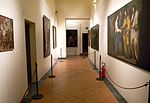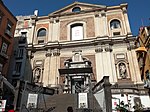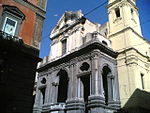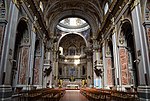Baptistery of San Giovanni in Fonte, Naples
4th-century ChristianityRoman Catholic churches in Naples

The Baptistery of San Giovanni is a Paleochristian baptistery attached to the Santa Restituta church in Naples, Italy. It is the oldest surviving baptistery from medieval Europe.
Excerpt from the Wikipedia article Baptistery of San Giovanni in Fonte, Naples (License: CC BY-SA 3.0, Authors, Images).Baptistery of San Giovanni in Fonte, Naples
Via Duomo, Naples San Lorenzo
Geographical coordinates (GPS) Address Nearby Places Show on map
Geographical coordinates (GPS)
| Latitude | Longitude |
|---|---|
| N 40.852944444444 ° | E 14.259361111111 ° |
Address
Basilica di Santa Restituta
Via Duomo
80138 Naples, San Lorenzo
Campania, Italy
Open on Google Maps











